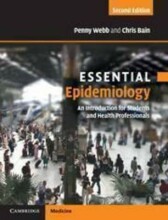Summary: Samenvatting Hoorcolleges Fear^j Anxiety And Related Disorders
- This + 400k other summaries
- A unique study and practice tool
- Never study anything twice again
- Get the grades you hope for
- 100% sure, 100% understanding
Read the summary and the most important questions on Samenvatting Hoorcolleges Fear^J Anxiety And Related Disorders
-
1 Lecture 1 (Main lecture): From anxiety to anxiety disorder
This is a preview. There are 2 more flashcards available for chapter 1
Show more cards here -
What is the relationship between fear/anxiety and the physiological response in the body?
• Both fear and anxiety trigger physiological responses like increased respiration, muscle tension, and perspiration.
• Fear is associated with an immediate alarm response to a known threat.
• Anxiety, on the other hand, involves a state of alarm in response to a vague sense of threat.
• Fear activates the sympathetic nervous system, leading to a fight or flight reaction. -
2 1.2 Freeze/flight/fight
This is a preview. There are 1 more flashcards available for chapter 2
Show more cards here -
What happens when someone experiences fear?
When one is afraid, they are in a state of immediate alarm due to an immediate threat. They can freeze, flight, or fight. Freezing is the moment one takes to decide whether to run or fight. Running or fighting might not always be helpful nowadays. It becomes a problem when it turns dysfunctional. -
3 1.3 Normal versus pathological anxiety
This is a preview. There are 1 more flashcards available for chapter 3
Show more cards here -
What are the characteristics of normal anxiety and pathological anxiety?
• _____________: adaptive, inborn response to threat or to the absence of people or objects that signify safety can result in cognitive (i.e., worry) and somatic (e.g., racing heart, sweat, shaking, freezing, et cetera) symptoms.
• _____________: excessive fear, impairs functioning. -
4 1.4 DSM-classification
This is a preview. There are 1 more flashcards available for chapter 4
Show more cards here -
What are some characteristics of a phobia?
• Fear is unreasonably strong or permanent.
• Fear arises without sufficient reason.
• Fear cannot be controlled or endured.
• Fear causes suffering and constraints life.
• Fear has typical symptoms patterns that are present. -
5 1.4.1 Diagnostic process for
This is a preview. There are 1 more flashcards available for chapter 5
Show more cards here -
What differentiates normal anxiety from anxiety disorders according to the given criteria?
- Intensive/unreasonable anxiety leads to further evaluation.
- If no somatic underlying disease is present, it excludes anxiety syndrome (somatic).
- The absence of a mental underlying disease excludes anxiety syndrome (mental).
- Spontaneous anxiety with sudden intense onset or chronic worry points to Panic Disorder or Generalized Anxiety Disorder (GAD).
- Object- or situation-specific anxiety indicates Specific Phobia, Social Phobia, or Agoraphobia.
- If other forms of anxiety are present, it could be Obsessive-Compulsive Disorder (OCD) or Post-Traumatic Stress Disorder (PTSD). -
6 1.4.2 Avoidance
This is a preview. There are 1 more flashcards available for chapter 6
Show more cards here -
What are some ways in which patients with anxiety disorders typically try to alleviate anxiety?
- Avoiding the trigger
- Developing a safety behavior like having someone accompany them
- Using a substance or medication
- Engaging in cognitive avoidance (e.g., praying, counting)
- Safety behaviors can be both overt and covert -
7 1.5 Anxiety disorders, stress-related disorders, OCD
This is a preview. There are 11 more flashcards available for chapter 7
Show more cards here -
What are the lifetime and 12-month prevalence rates for any anxiety disorder, and how do they differ between genders?
- Lifetime prevalence ranges from 10 to 29 percent.
- The 12-month prevalence is 18 percent.
- Women are more likely to have an anxiety disorder, almost double compared to men.
- Social anxiety disorder is initially more prevalent in boys but later more in girls. -
How does the development of fears and anxiety disorders progress with age according to the chart?
- Infancy and toddlerhood show normative fears, separation anxiety, and oppositional defiant behavior.
- In childhood, fears include dying or death of others, thunder, fire, and nightmares.
- School-age fears include fear of negative evaluation, school anxiety, and performance anxiety.
- Adolescence sees rejection from peers as a key fear. -
Are spontaneous remissions common in anxiety disorders in children?
- Yes, spontaneous remissions are frequent -
What are some factors that contribute to the development of a condition, also known as its etiology?
- Protective factors
- Susceptibility
- Vulnerability
- Predisposition
- Triggers/eliciting environmental conditions
- Maintaining factors
- Higher grades + faster learning
- Never study anything twice
- 100% sure, 100% understanding
Topics related to Summary: Samenvatting Hoorcolleges Fear^j Anxiety And Related Disorders
-
Cognitive schema
-
Early versus late stages of processing threat
-
(Integrative lecture): From anxiety to anxiety disorder
-
Dave (Panic disorder)
-
Mike (Social anxiety disorder)
-
Victor (PTSD)
-
DSM-criteria
-
Predispositions
-
The vicious cycle of anxiety attacks
-
Most frequent misinterpretations of panic attacks
-
(Interactive lecture): Panic disorder and agoraphobia
-
Expectancy violation
-
Reasons why exposure might fail
-
Possible consequences of trauma
-
Comorbidity
-
Possible differentiation
-
Etiological factors
-
Cognitive model of PTSD by Ehlers and Clark

































